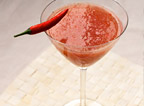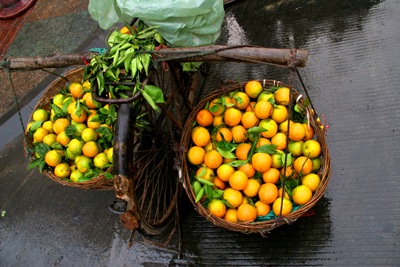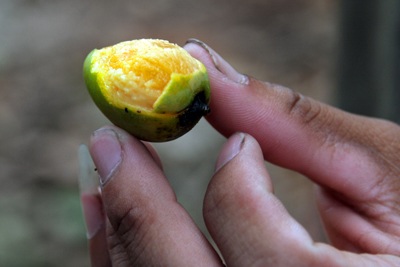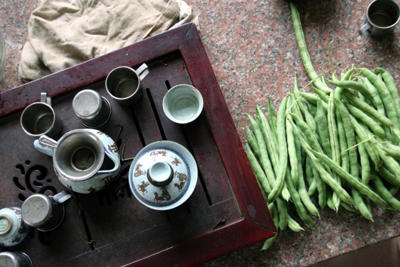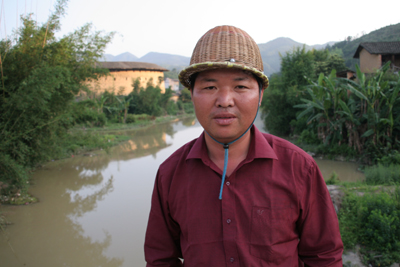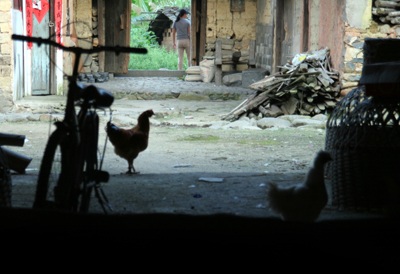 Traveling is stressful, especially when you’re constantly moving from city to city and waking up in different hotels. Our accommodations here in Yongding find us in a 120-year-old farmhouse complete with wooden boards for beds and a rooster outside the window for an alarm clock. His 4:30 A.M. wake up call and no sleep button option has Nate and I up in time to enjoy a breakfast of fried fish and eggs with the family of the house.
Traveling is stressful, especially when you’re constantly moving from city to city and waking up in different hotels. Our accommodations here in Yongding find us in a 120-year-old farmhouse complete with wooden boards for beds and a rooster outside the window for an alarm clock. His 4:30 A.M. wake up call and no sleep button option has Nate and I up in time to enjoy a breakfast of fried fish and eggs with the family of the house.
Before Nate and I began this summer, we knew only so much planning could be done and that the coming together of our book would rely on the unfolding of our journey, on mornings like these. Our objective- set from the get go- has remained a directional constant, but its realization has been a process. “Showcasing a people and the cuisine” is easier said than done. Is it a matter of concentrating on the people and throwing in some recipes? Do you describe the food and only occasionally mention the people? What exactly is a “culinary travelogue”?

The more we travel and have experiences, the more culture seems to boil down to the culinary: what people eat, when they eat, how they eat, and the way they choose to serve it says a lot about a people. The kitchen has become our library and the meals we’ve shared with the Chinese people our most valuable form of research. Mealtime is when people relax and feel free to be candid about life, politics, religion, and whatever else is on their mind. We’ve had some of our most meaningful conversations flow over a mug of beer and a hot plate of Gongbao Jiding.
MKT
Here's a recipe for Gongbao Jiding or "Peanut Chicken", a favorite of westerners and a dish common all over China. It's best enjoyed over cold beer, rice, and an excellent conversation.
GONGBAO JIDING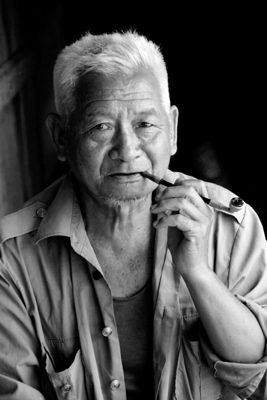
Ingredients:
2 boneless, skinless chicken breasts cut into small cubes
1 egg white, lightly whisked
1/3 cup peanut oil
4 dried red chillies, crushed
2 tablespoons soy sauce
2 tablespoons dry sherry
2 tablespoons water
2 tablespoons cornstarch
2 tablespoons rice vinegar
1 tsp sugar
1 garlic clove, finely minced
5 scallions, sliced lengthwise
1 tablespoon peeled ginger, sliced thin
1/2 cup unsalted peanuts or cashews
Instructions:
1. In a bowl mix sherry, soy sauce, water, 1 tablespoon cornstarch, rice vinegar, sugar. Set aside.
2. Next toss cubed chicken with egg white and 1 tablespoon cornstarch in a separate bowl. Set aside.
3. Heat up peanut oil in a wok and add the crushed red chillies. Sauté until chillies begin to turn brown. Remove chillies and set aside.
4. Place coated chicken in wok over high heat until browned, about 5 minutes. Remove from wok and set aside.
5. Pour out oil, leaving about a tablespoon in wok, reduce heat, and add ginger, scallions, and garlic and sauté for about 2 minutes.
6. Reduce heat to low and add sherry mixture, stirring for about 2 minutes or until sauce thickens
7. Add chicken, nuts, and chillies. Stir over heat for about 4 minutes
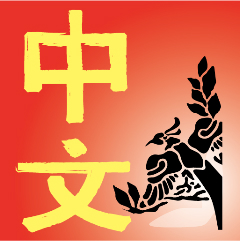 I just discovered this iPhone App called Chinese Flashcards that helps you practice reading Chinese Characters on the go. I've been using it while on the subway, elevator, waiting room, and being the true nerd I am, while walking down the street. I recommend it for beginners that want to get familiar with basic Chinese characters as well as advanced speakers who want to brush up on their vocab. Reading and writing Chinese characters is a hard skill to keep up. If you don't live in China or Taiwan it's easy to quickly forget the meaning of common characters and how to write them. Even some of the Chinese-Americans I know, whose families speak only Chinese at home, can't read and write a lot of basic vocabulary words because they are out of practice.
I just discovered this iPhone App called Chinese Flashcards that helps you practice reading Chinese Characters on the go. I've been using it while on the subway, elevator, waiting room, and being the true nerd I am, while walking down the street. I recommend it for beginners that want to get familiar with basic Chinese characters as well as advanced speakers who want to brush up on their vocab. Reading and writing Chinese characters is a hard skill to keep up. If you don't live in China or Taiwan it's easy to quickly forget the meaning of common characters and how to write them. Even some of the Chinese-Americans I know, whose families speak only Chinese at home, can't read and write a lot of basic vocabulary words because they are out of practice.  chinese language
chinese language 





